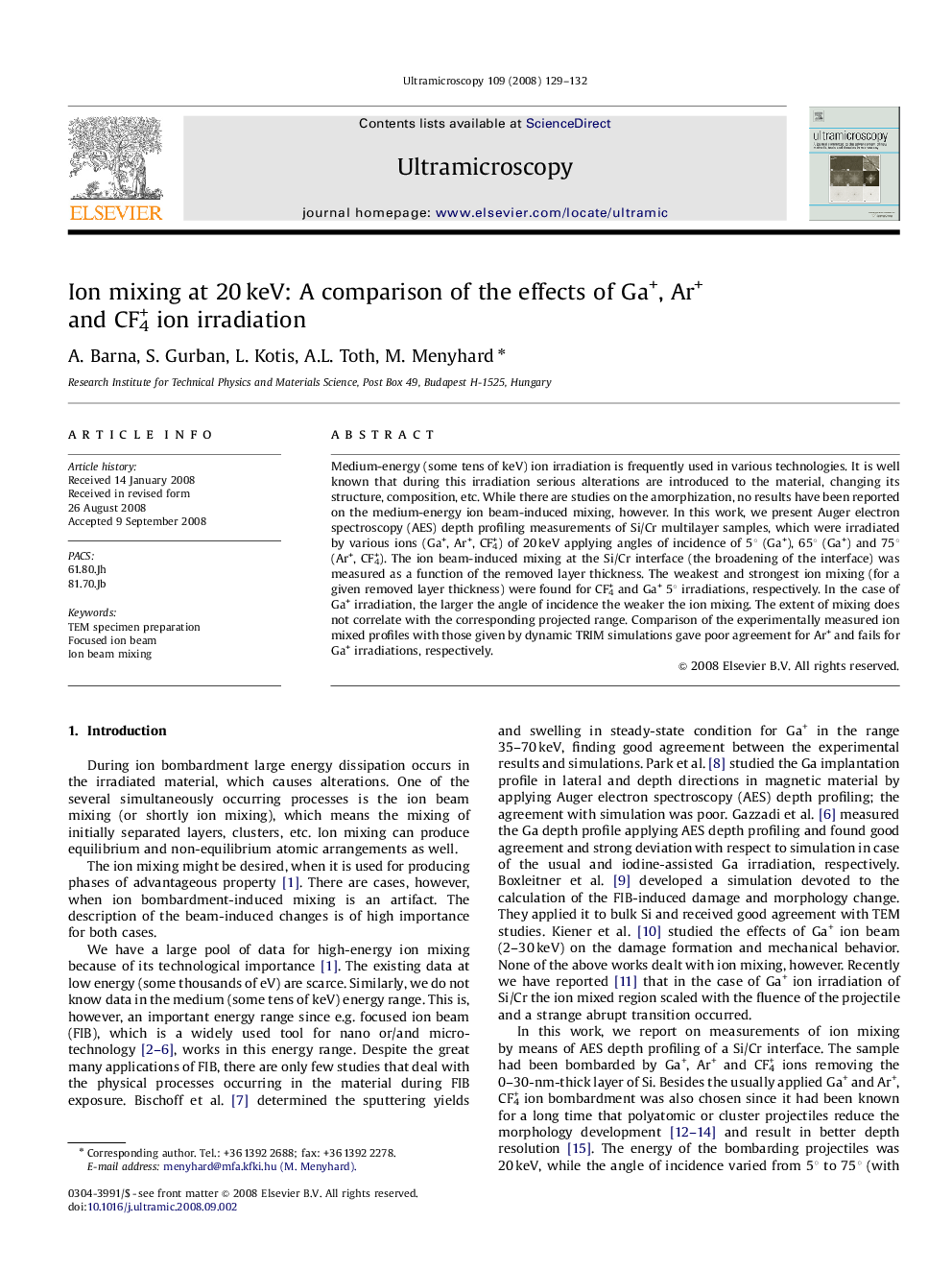| Article ID | Journal | Published Year | Pages | File Type |
|---|---|---|---|---|
| 1678930 | Ultramicroscopy | 2008 | 4 Pages |
Abstract
Medium-energy (some tens of keV) ion irradiation is frequently used in various technologies. It is well known that during this irradiation serious alterations are introduced to the material, changing its structure, composition, etc. While there are studies on the amorphization, no results have been reported on the medium-energy ion beam-induced mixing, however. In this work, we present Auger electron spectroscopy (AES) depth profiling measurements of Si/Cr multilayer samples, which were irradiated by various ions (Ga+, Ar+, CF4+) of 20 keV applying angles of incidence of 5° (Ga+), 65° (Ga+) and 75° (Ar+, CF4+). The ion beam-induced mixing at the Si/Cr interface (the broadening of the interface) was measured as a function of the removed layer thickness. The weakest and strongest ion mixing (for a given removed layer thickness) were found for CF4+ and Ga+ 5° irradiations, respectively. In the case of Ga+ irradiation, the larger the angle of incidence the weaker the ion mixing. The extent of mixing does not correlate with the corresponding projected range. Comparison of the experimentally measured ion mixed profiles with those given by dynamic TRIM simulations gave poor agreement for Ar+ and fails for Ga+ irradiations, respectively.
Related Topics
Physical Sciences and Engineering
Materials Science
Nanotechnology
Authors
A. Barna, S. Gurban, L. Kotis, A.L. Toth, M. Menyhard,
